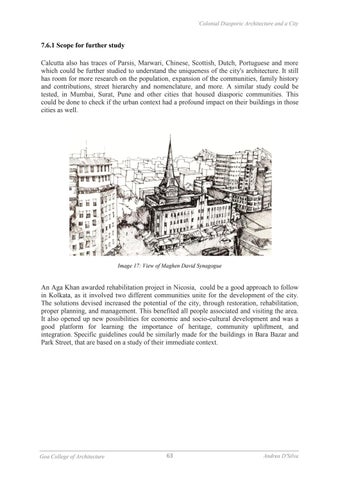`Colonial Diasporic Architecture and a City
7.6.1 Scope for further study Calcutta also has traces of Parsis, Marwari, Chinese, Scottish, Dutch, Portuguese and more which could be further studied to understand the uniqueness of the city's architecture. It still has room for more research on the population, expansion of the communities, family history and contributions, street hierarchy and nomenclature, and more. A similar study could be tested, in Mumbai, Surat, Pune and other cities that housed diasporic communities. This could be done to check if the urban context had a profound impact on their buildings in those cities as well.
Image 17: View of Maghen David Synagogue
An Aga Khan awarded rehabilitation project in Nicosia, could be a good approach to follow in Kolkata, as it involved two different communities unite for the development of the city. The solutions devised increased the potential of the city, through restoration, rehabilitation, proper planning, and management. This benefited all people associated and visiting the area. It also opened up new possibilities for economic and socio-cultural development and was a good platform for learning the importance of heritage, community upliftment, and integration. Specific guidelines could be similarly made for the buildings in Bara Bazar and Park Street, that are based on a study of their immediate context.
Goa College of Architecture
63
Andrea D'Silva



















